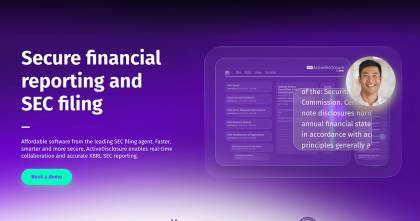As we enter the second half of 2025, the regulatory landscape for financial and sustainability reporting continues to evolve. For UK and EU-listed companies, the European Single Electronic Format (ESEF) and its UK variant (UKSEF) remain central to annual reporting obligations. With updated taxonomies, growing ESG disclosure expectations, and increased scrutiny from regulators, now is the time for finance leaders to reassess their ESEF readiness.
1. ESEF and UKSEF: Where We Are Now
Since 2021, ESEF has been mandatory for issuers on EU-regulated markets, requiring annual financial reports (AFRs) to be submitted in XHTML format with iXBRL tagging for consolidated financial statements. In the UK, the Financial Conduct Authority (FCA) has also implemented a similar framework through both ESEF and the UK Single Electronic Format (UKSEF), supplemented by additional guidance tailored to UK-specific reporting needs.
As of 2025, the ESEF taxonomy has been updated once again, and the FCA’s National Storage Mechanism (NSM) has been upgraded to support the latest version. Companies must now ensure they are using the correct taxonomy and fully understand the technical filing requirements, including the structure of XBRL report packages and the submission process via the NSM.
Another major development is the introduction of Provision 29 in the UK Corporate Governance Code 2024, which places new emphasis on internal controls related to digital reporting. This includes compliance with XBRL tagging and both ESEF and UKSEF standards. Provision 29, applicable for accounting periods beginning on or after 1 January 2026, elevates digital reporting controls to a “material” level—requiring boards to treat them with the same rigor as other financial reporting controls.
The FCA’s Disclosure Guidance and Transparency Rules (DTR 4.1.15R–4.1.18R) continue to mandate ESEF/UKSEF compliance. However, the FCA has highlighted persistent issues with low compliance rates and tagging accuracy, prompting many companies to reassess their internal digital reporting controls in light of the new governance expectations.
2. ESG Reporting and the Rise of Dual Taxonomies
A significant development in 2025 is the growing integration of ESG disclosures into the annual reporting process. EU companies are preparing for the Corporate Sustainability Reporting Directive (CSRD), which will require many additional entities to report using European Sustainability Disclosure Standards (ESRS). Meanwhile, in the UK, a public consultation was launched in June 2025 regarding the Exposure Draft of UK Sustainability Reporting Standards (UK SRS) with companies expected to align with these standards in due course.
This divergence means companies operating across jurisdictions must prepare for dual compliance—navigating ESEF requirements while managing ESG disclosures in line with evolving sustainability standards.
3. Other Common ESEF Challenges in 2025
Despite several years of ESEF implementation, many companies continue to face recurring challenges in digital reporting. Key operational challenges include:
- Late-stage tagging: Applying iXBRL tags after the report design is finalized often leads to errors and delays.
- Version control issues: Managing multiple document versions across teams increases the risk of inconsistencies.
- Limited internal expertise: iXBRL tagging and taxonomy mapping require specialized knowledge that many in-house teams lack.
- ESG integration: Combining financial and non-financial disclosures into a single structured report remains a complex task.
To provide a more comprehensive view of current digital reporting challenges, we’ve summarized key issues identified in two recent regulatory reviews: the FRC’s April 2025 Structured Digital Reporting Insights Report and the ESMA 2024 Corporate Enforcement Report. These findings offer insights into common pitfalls and compliance expectations for listed companies across the UK and EU.
| Tagging Issues Highlighted by the FRC (April 2025 Review) |
The FRC’s 2024/25 structured digital reporting insights report identified several persistent tagging problems among UK-listed companies:
Read more: https://media.frc.org.uk/documents/Structured_digital_reporting_factsheet.pdf |
| Key Issues from ESMA’s 2024 Corporate Reporting Enforcement Report |
ESMA and national enforcers across the EU also highlighted several critical compliance concerns in the 2024 Corporate Reporting Enforcement Report:
|
4. Preparing for 2025 Filings
As regulatory expectations around digital reporting continue to rise, listed companies must take a proactive and structured approach to preparing their 2025 Annual Financial Reports (AFRs). Early preparation is essential—not only for financial disclosures but also for integrating ESG data into a cohesive, structured report.
Companies should ensure their reporting tools are updated to support the latest 2024/2025 ESEF taxonomies and engage cross-functional teams—including finance, legal, ESG, and investor relations—early in the process. Testing filings using the National Competent Authority’s submission tools can help identify issues before final submission, reducing the risk of non-compliance. Given the complexity of iXBRL tagging and evolving regulatory requirements, many companies are also turning to external providers for expert support that combines both technology and regulatory insight.
In parallel, digital reporting controls are now explicitly considered material under governance frameworks like Provision 29. This includes ensuring tagging accuracy, compliance with XHTML and iXBRL formats, robust submission processes via the FCA’s digital gateway, and effective change management for taxonomy updates. Maintaining clear audit trails of tagging decisions and validations is also critical, as these controls are now subject to board-level scrutiny.
Why ActiveDisclosure by DFIN is the Right Fit
While many solutions offer basic tagging tools, ActiveDisclosure by DFIN is a comprehensive platform built specifically for the evolving needs of listed companies. As ESEF and ESG reporting requirements grow more complex, ActiveDisclosure provides the technology, expertise, and support to help you stay ahead.
What Sets ActiveDisclosure Apart
-
Built-in iXBRL Tagging
Reduce manual effort with intelligent automation that tags both your financial statements and full annual report in line with the latest ESEF taxonomy. -
Excel Linking
Maintain consistency and accuracy across your report with dynamic Excel linking—ensuring that updates to source data are reflected instantly throughout your document. -
Real-Time Collaboration
Enable seamless collaboration across finance, legal, sustainability, investor relations, and external advisors. Draft, edit, and review in real time—on a single, secure platform. -
Built-in Compliance Checks
Ensure your reports meet all regulatory requirements with automated validations and error detection—reducing risk and saving time. -
Future-proof your reporting for UK SRS/ISSB Taxonomy/CSRD ESRS Taxonomy
Tag your ESG disclosures in accordance with the ISSB taxonomy/CSRD ESRS taxonomy,and UK Sustainability Disclosure Standards (UK SDS), ensuring alignment with emerging sustainability frameworks. -
24/7/365 Expert Support
Gain access to the largest team of XBRL experts in the industry. Our regulatory specialists are available around the clock to support your team through every step of the process. -
Transparent Pricing
No hidden fees. No surprises. Just clear, predictable pricing that aligns with your reporting needs.
Whether you're preparing your first structured report or looking to streamline a complex, multi-jurisdictional process, ActiveDisclosure delivers the clarity, control, and compliance you need.
Get Ahead of Your 2025 Filing
Don’t wait until year-end. Schedule a demo today to see how ActiveDisclosure can simplify your ESEF and UKSEF reporting.

